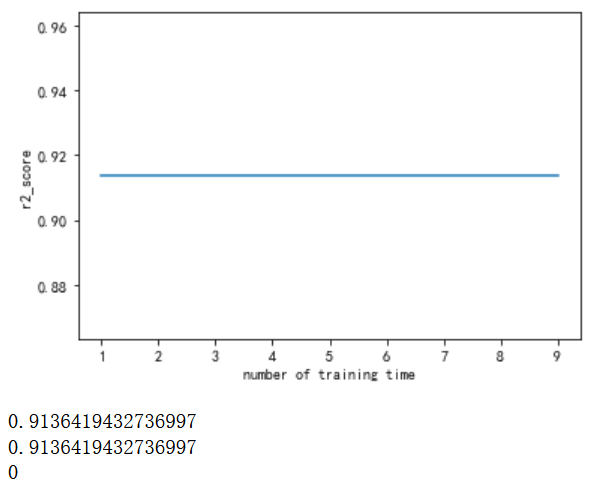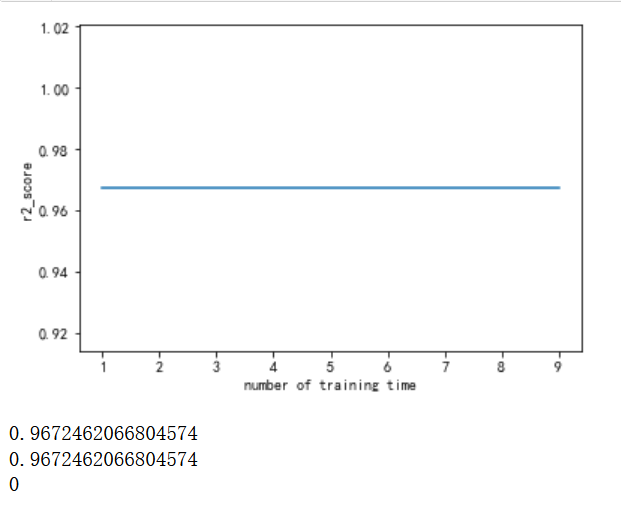模型优化
- 计算机科学
- 2023-04-23
- 510热度
- 0评论
1、计时器
#start time
time_start = time.time()
#end time
time_end = time.time()
#spend time
time_c= time_end - time_start
print(time_c)2、不要用导入的安装包名字命名对象
不要用xgb来命名XGBRegressor对象,
3、GridSearchCV调参的参数包括:
- estimator:分类器,即用于建模的算法。
- param_grid:用于最优化的参数的取值,值为字典或者列表,例如
param_grid = {'C': [0.01, 0.1, 1, 10]}。 - cv:交叉验证折数,默认为5折。
- scoring:评估函数,即计算模型得分的函数,默认为
accuracy_score。 - fit_params:训练时需要传入的参数,例如
fit_params = {'sample_weight': [0.1, 0.2, 0.3, 0.4]}。 - n_jobs:并行化训练的工作线程数,默认为1。
- verbose:输出详细信息,默认为0。
其中,estimator参数需要根据具体的问题选择合适的分类器,param_grid参数需要根据具体的问题调整超参数,cv参数需要根据具体的问题选择合适的折数,scoring参数需要根据具体的问题选择合适的评估函数,fit_params参数需要根据具体的问题设置训练时需要传入的参数。
4、SVR模型优化
超参数:
param_grid = param = {'kernel' : ('linear', 'poly', 'rbf', 'sigmoid'), 'C' : [1,5,10],'degree' : [3,8],'coef0' : [0.01,10,0.5], 'gamma' : ('auto','scale')}
SVR模型的超参数包括
核函数:使用线性核、多项式核、高斯核
正则化参数C:根据实际问题选择合适的值
松弛因子:松弛因子可以用于控制模型的复杂度。不同的超参数组合可以得到不同的模型性能
示例:
from sklearn import datasets
from sklearn.svm import SVC
from sklearn.model_selection import train_test_split
from sklearn.metrics import accuracy_score
# 加载鸢尾花数据集
iris = datasets.load_iris()
X = iris.data
y = iris.target
# 将数据集分为训练集和测试集
X_train, X_test, y_train, y_test = train_test_split(X, y, test_size=0.2, random_state=42)
# 定义SVR模型
svm_model = SVC(kernel='linear', C=1)
# 定义要调整的参数范围
param_grid = {'kernel': ['linear', 'poly'], 'C': [0.01, 0.1, 1, 10]}
# 使用GridSearchCV进行调参
grid_search = GridSearchCV(estimator=svm_model, param_grid=param_grid, cv=5)
grid_search.fit(X_train, y_train)
# 输出最佳参数和最佳得分
print("Best parameters: ", grid_search.best_params_)
print("Best score: ", grid_search.best_score_)5、 将DataFrame写入Excel文件
X_train.to_excel('example.xlsx', sheet_name='Sheet1', index=False) 6、
GBR模型的超参数包括:
kernel_type:GBR模型的核函数类型,可以是线性核、多项式核、高斯核等。gamma:GBR模型的偏置参数,用于调整正则化系数的强度。nu:GBR模型的阻尼系数。c1:GBR模型的惩罚参数,用于控制模型的复杂度。c2:GBR模型的惩罚参数,用于控制模型的复杂度。kernel_regularization:GBR模型的正则化参数,用于控制模型的复杂度。learning_rate:GBR模型的学习率。n_estimators:GBR模型的分裂参数,用于控制模型的复杂度。max_depth:GBR模型的树深度。subsample:GBR模型的样本采样参数,用于控制模型的泛化能力。feature_fraction:GBR模型的特征比例,用于控制模型的泛化能力。bagging_fraction:GBR模型的随机采样参数,用于控制模型的泛化能力。n_clusters:GBR模型的聚类数。
7、相关参数
slump:
X_train, X_test, y_train, y_test = train_test_split(X, y, test_size=0.2,random_state=109)
model = GradientBoostingRegressor(n_estimators=109, max_depth=3, learning_rate=0.1, random_state=188)
permeability
X_train, X_test, y_train, y_test = train_test_split(X, y, test_size=0.2,random_state=718)
model = GradientBoostingRegressor(n_estimators=78, max_depth=6, learning_rate=0.1, random_state=148)

